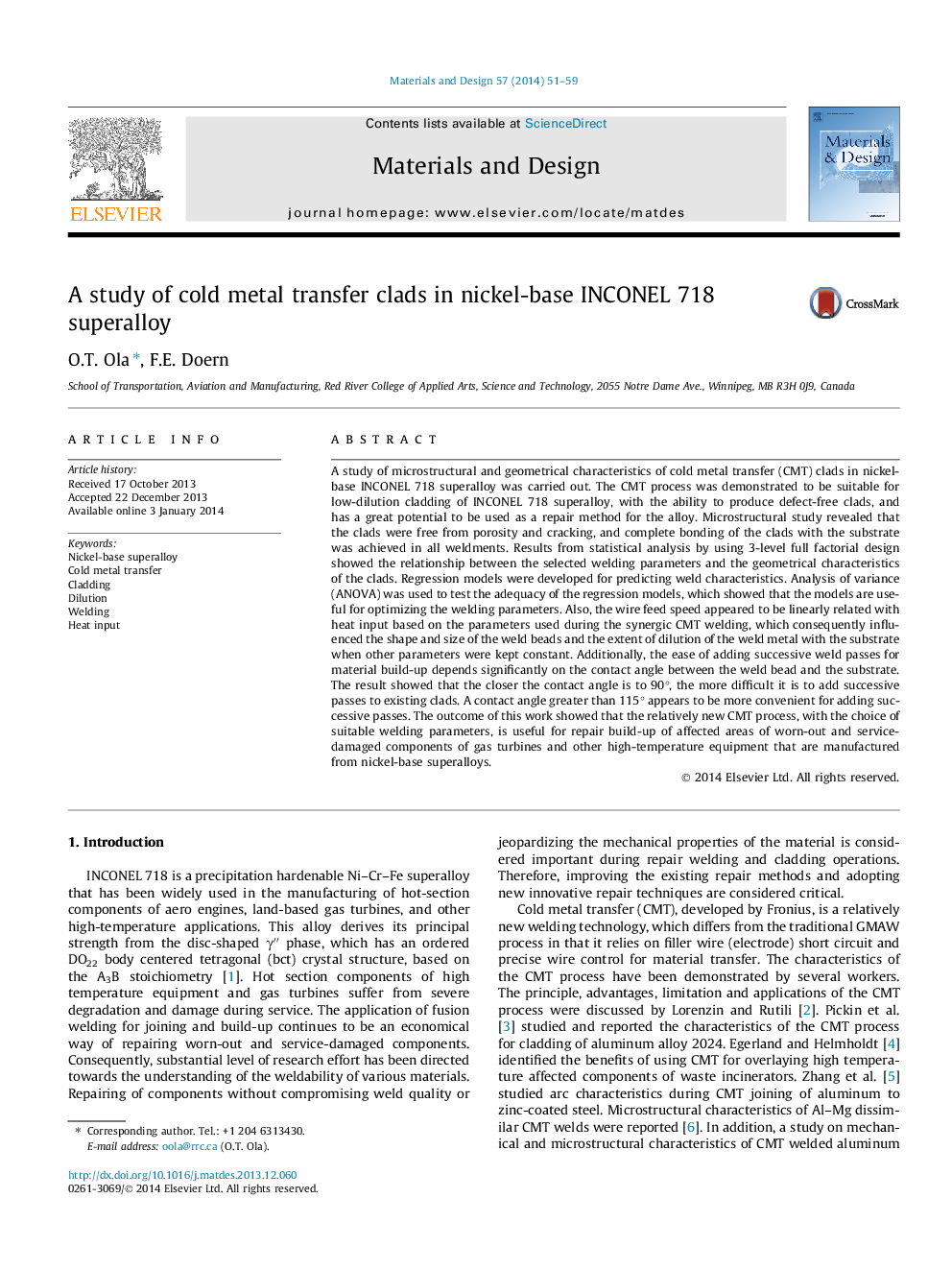| کد مقاله | کد نشریه | سال انتشار | مقاله انگلیسی | نسخه تمام متن |
|---|---|---|---|---|
| 829319 | 1470340 | 2014 | 9 صفحه PDF | دانلود رایگان |

• Low-dilution cladding of IN 718 superalloy was achieved using the CMT process.
• The CMT process produced defect-free clads in IN 718 superalloy.
• Statistical analysis was used to relate welding parameters with clad geometry.
• The developed regression models are considered useful for parameters optimization.
• Easy addition of successive weld passes depends significantly on the contact angle.
A study of microstructural and geometrical characteristics of cold metal transfer (CMT) clads in nickel-base INCONEL 718 superalloy was carried out. The CMT process was demonstrated to be suitable for low-dilution cladding of INCONEL 718 superalloy, with the ability to produce defect-free clads, and has a great potential to be used as a repair method for the alloy. Microstructural study revealed that the clads were free from porosity and cracking, and complete bonding of the clads with the substrate was achieved in all weldments. Results from statistical analysis by using 3-level full factorial design showed the relationship between the selected welding parameters and the geometrical characteristics of the clads. Regression models were developed for predicting weld characteristics. Analysis of variance (ANOVA) was used to test the adequacy of the regression models, which showed that the models are useful for optimizing the welding parameters. Also, the wire feed speed appeared to be linearly related with heat input based on the parameters used during the synergic CMT welding, which consequently influenced the shape and size of the weld beads and the extent of dilution of the weld metal with the substrate when other parameters were kept constant. Additionally, the ease of adding successive weld passes for material build-up depends significantly on the contact angle between the weld bead and the substrate. The result showed that the closer the contact angle is to 90°, the more difficult it is to add successive passes to existing clads. A contact angle greater than 115° appears to be more convenient for adding successive passes. The outcome of this work showed that the relatively new CMT process, with the choice of suitable welding parameters, is useful for repair build-up of affected areas of worn-out and service-damaged components of gas turbines and other high-temperature equipment that are manufactured from nickel-base superalloys.
Journal: Materials & Design - Volume 57, May 2014, Pages 51–59